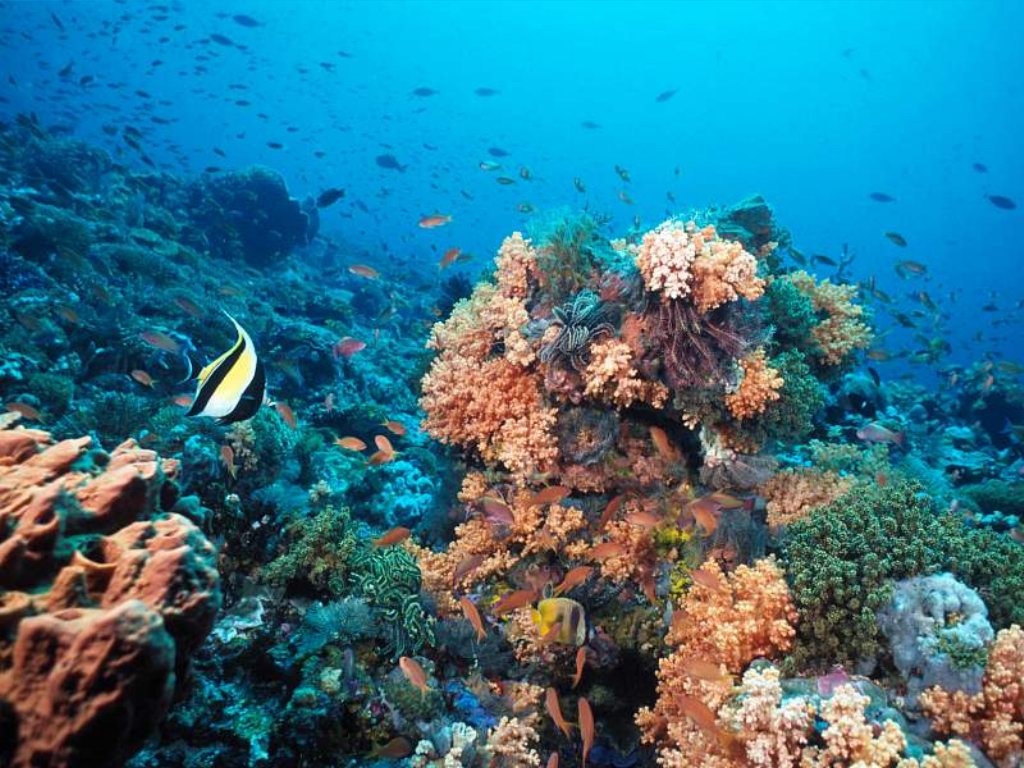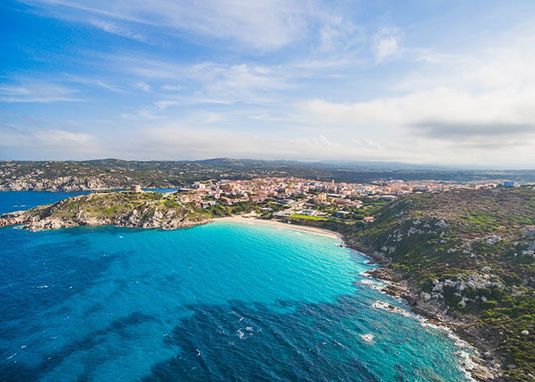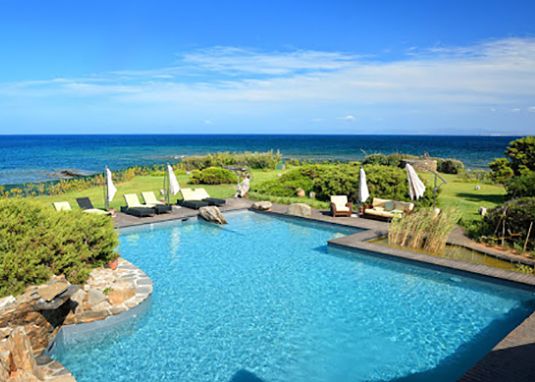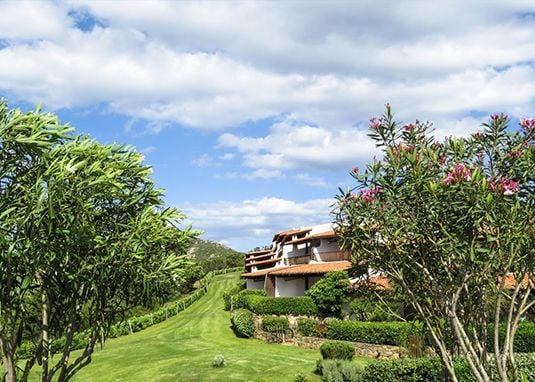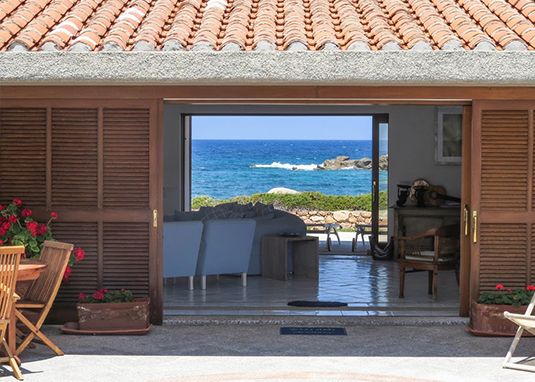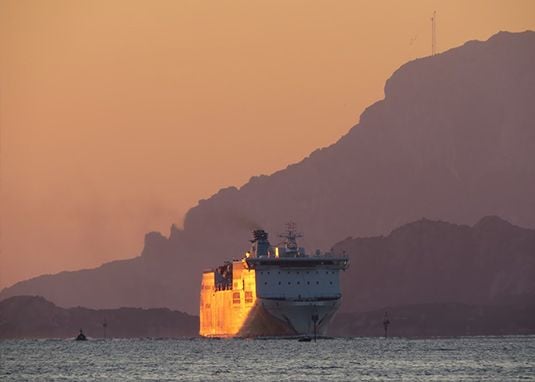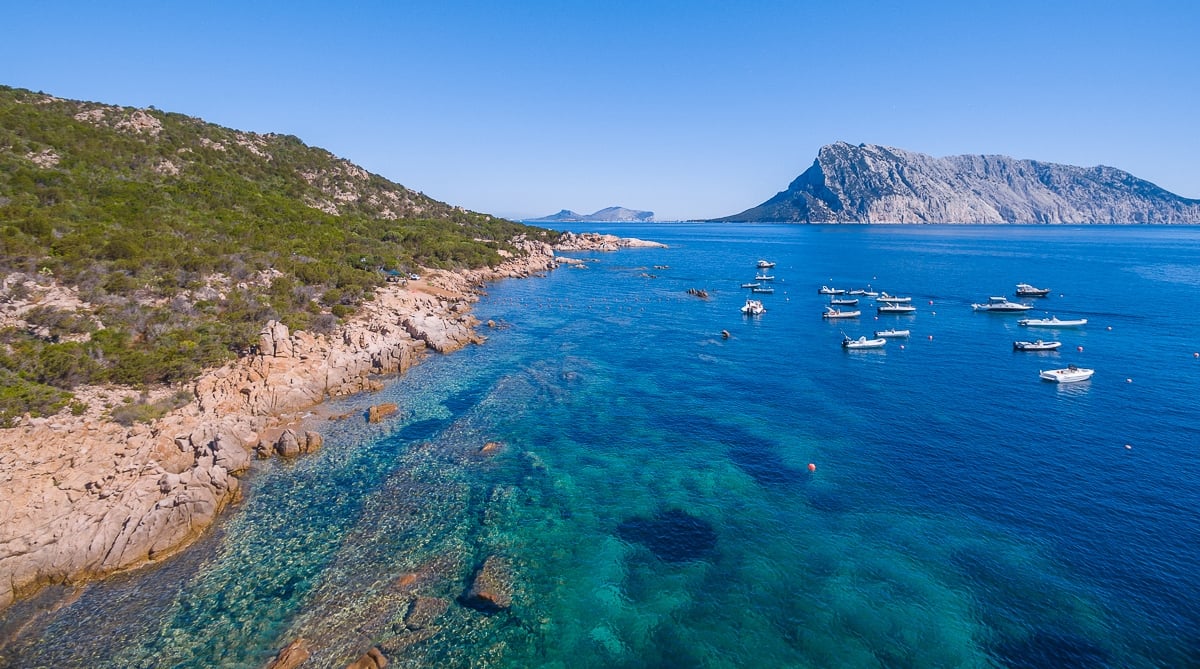
SEARCH FOR YOUR HOUSE IN SARDINIA
The Protected Marine Area of Tavolara
The peninsula of Capo Ceraso is part of the Protected Marine Area of Tavolara, and is characterized by a varied and charming landscape, a succession of bays, beaches, coves and headlands. The protected zone covers the entire territory that stretches from the beach La Cinta southbound, up to Capo Ceraso northbound and the three islands Tavolara, Molara e Molarotto.
The majestic Tavolara Island, the archetypal ideal island, owes its name to its particular narrow and long shape, ending in the offshoots of Punta Timone to the East and the flatter Spalmatore di Terra to the West. The big island rises up to 565 m above sea level with the peak of Punta Cannone, and lies in its magnificence on the surrounding territory, welcoming to Sardinia visitors landing in Olbia via ferry.
The island makes up a precious framework in which the sea, with its turquoise waters, meets the coast with its white beaches, the pink granite rocks and the high white limestone cliffs, creating a matchless mosaic of colours. The atmospheric effect called “Il cappello di Tavolara”, caused by the encounter between the hot and humid air currents and the mountain barrier, is even visible from far away and one can enjoy the changing scenarios related to the play of the wind and the clouds as perspective on the island changes.
A long and mysterious history
Up to 10,000 years ago, during the last glaciation, the island was connected to the mainland and emerged from a wooded and hillside area. As the ice melted, about 8,000 years ago, Tavolara gradually began to come apart first from the other islands and then from the mainland. Traces of its geological history can be found on the seabed, where ”fossil beaches”, underwater archaeological structures that indicate the level reached by sea through the ages, can be observed.
On the island there are more than eighty archaeological sites which testify to the rites of worship and prayer that took place there. Particularly noteworthy is the cave of the Pope, of the Middle Neolithic, inside which some rock paintings dating back to over 5,500 years ago, depicting pastel pink and orange hued human figures, can be found.
The seabeds around the island are particularly rich in shipwrecks, which testify to the fact that throughout the ages the island, though not having permanent settlements, had always had a strategic position with respect to commercial traffic from the mainland to Olbia, a city founded by the Carthaginians in the fourth century BC. After the key role played in Roman and Byzantine times, from 1400 the Tavolara Island experienced a long period of decline which only ended with the advent of the Savoy dynasty.
It was Carlo Alberto Prince of Savoy who assigned to Paolo Bertoleoni, a descendant of one of the island’s first inhabitants, the title of island’s owner. From that very moment, Bertoleoni began to see himself as the “king of Tavolara “the smallest kingdom in the world”, of which some traces can even be found at Buckingham Palace, among the portraits of all the kings of the Earth. In the 60s, with the arrival of the Navy, which expropriated the area to build a military base for very low frequency radio communications, the small community of fishermen and lighthouse keepers moved to the coast where they founded Porto San Paolo.
The Molara Island much less impressive than Tavolara, owes its name to its rounded, wheel-like shape that characterizes it. The island, consisting of pink granite, is very rocky and steep, but it also has a variety of perennial springs which allowed human settlements to develop, and is covered by the typical dense scrub vegetation, the Mediterranean Scrub, which is characteristic of Mediterranean coastal regions. The famous Molara pools, a shallow stretch of turquoise and transparent waters, are one of the island’s major attractions along with some ruins of Churches and medieval villages.
At Cala Chiesa stands the village of Gurguary, the only surviving example of a medieval village in Sardinia and parts of the St. Pontian’s Church, linked to the figure of Pope Pontian who died in exile on Tavolara. Currently, the island is owned by an Olbia-based family and visits are only allowed along the coast.
Molarotto, the third island forming part of the protected area, is the last outpost of land before the open sea. It is a small outcrop of pink granite sometimes turning white due to a multitude of birds nesting in the nearby islands which alight to rest there.
The Natural Environment - Flora e Fauna
Flora and fauna are the absolute protagonists of the protected area, and their extraordinary wealth and biodiversity enhance the scenic value of this unique land. The vertebrate species reported in the area make up about 50% of all those present in Sardinia. Among amphibians, reptiles and birds, there are many species protected by regional laws and international conventions.
The Shag and the Mediterranean Shearwater, who chose the island as the ideal habitat for nesting and rearing their offspring, as well as the Tern and the Little Tern, i.e. agile fishing birds prospering on the fish-rich waters around the island, are reported to live on the island. Besides the more common Yellow-legged Gulls, the island also hosts the rarer Corsican Gull, which is exclusive to the Mediterranean Sea, some pairs of hawks, egrets and various species of herons. The Tavolara Island is also the only small island to host a pair of Golden Eagles.
If you immerse yourself into the reserve waters you can even admire the variety of species that flock in this underwater world. Large marine mammals such as sperm whales, coastal dolphins and the harmless basking sharks coexist with smaller fish including groupers, barracuda, white sea breams, moray eels and croakers, thus creating a charming and mysterious kaleidoscope of colours. The protected area is also particularly rich in botanical terms thanks to the many habitats it hosts. The lush Mediterranean scrub growing on the mainland with its junipers, arbutuses, pine trees and holm-oaks contrasts with the colourful underwater vegetation, which includes red and yellow Pamuricee and gorgonia, seagrass and Caulerpa seaweed.
These animal and plant species with their enormous biodiversity make up an unparalleled ecological heritage, one the reserve has the duty to defend and protect
Looking for the island: "Some people say that, while we spend nine months in our mother’s womb suspended in amniotic fluid, we live that time as if we were an island. And when we are born we remember that time as a happy and peaceful one. By looking for an island, we unconscious wish to relive that magical time”
From: Folco Quilici, Tavolara Punta Coda Cavallo Protected Sea Area
The Sea Area, except for Molara Private Island, can be visited without need of special permissions. Although the area is open all year round, the best months to visit it are in spring and autumn, when the influx of tourists is lower than normal..
There are a large number of activities to be practised, depending on the seasons and the variety of habitats characterizing this area. Among the most popular ones, diving is undoubtedly the symbol of the Tavolara area, ranged among the most important ones in the Mediterranean area as far as diving is concerned. The area of Li Pischini, with its natural white sandy pools, has indeed been defined by Fulco Pratesi as the world’s finest ecosystems in shallow waters.
The numerous shoals, comprising submerged limestone and granite pinnacles covered with vegetation, are the favourite haunt of a large variety of plant and animal species including red stars, yellow gorgonia, sponges, red algae, gilthead sea breams, dentexes and lobsters, which can easily be observed by those who venture to these depths. Underwater, wrecks of vessels sunk in the waters around the island over the centuries can be admired, along with the beautiful fossil beaches, which testify to the geological history of the area. In addition to diving, sea lovers can enjoy the beautiful beaches and coves of the reserve, which with their pink granite, the white beaches and the emerald waters, create a dreamlike atmosphere, the ideal place for those who want to be surrounded by pure and untouched nature.
On the other hand, those who prefer to stay on the mainland will find that the interior of Tavolara offers a variety of hiking trails to suit all needs. The most expert hikers can venture down the path that joins the two ends of the island, with the climb to Punta Cannone, a rough mountain peak from which they can take breath-taking views, while other less demanding trails wind through the island and provide breath-taking views of the Molara Island, the coast and the clear sea.
For further information:
- Consorzio di Gestione Area Marina Protetta di Tavolara- Punta Coda Cavalloo www.amptavolara.it












.jpg)

